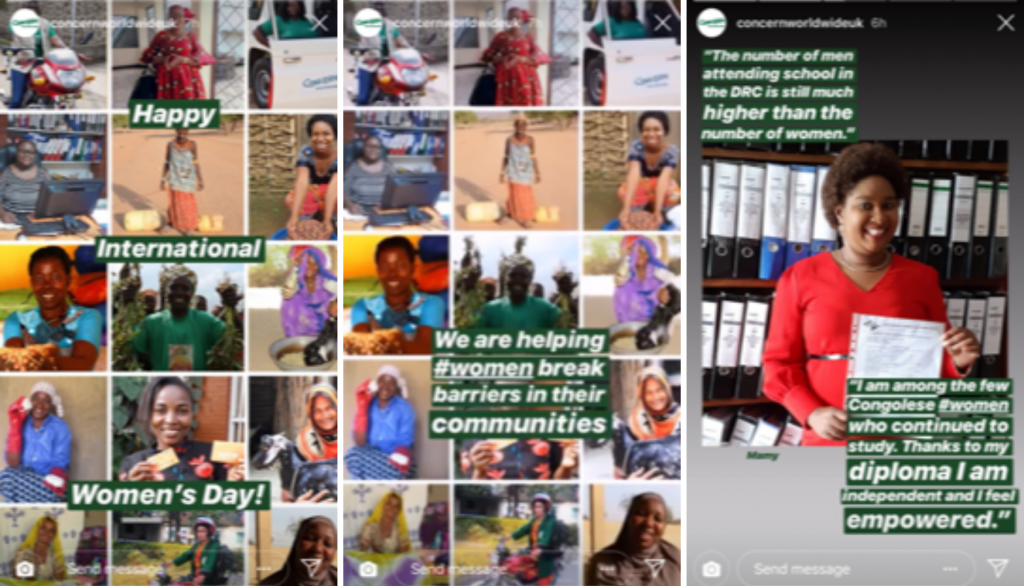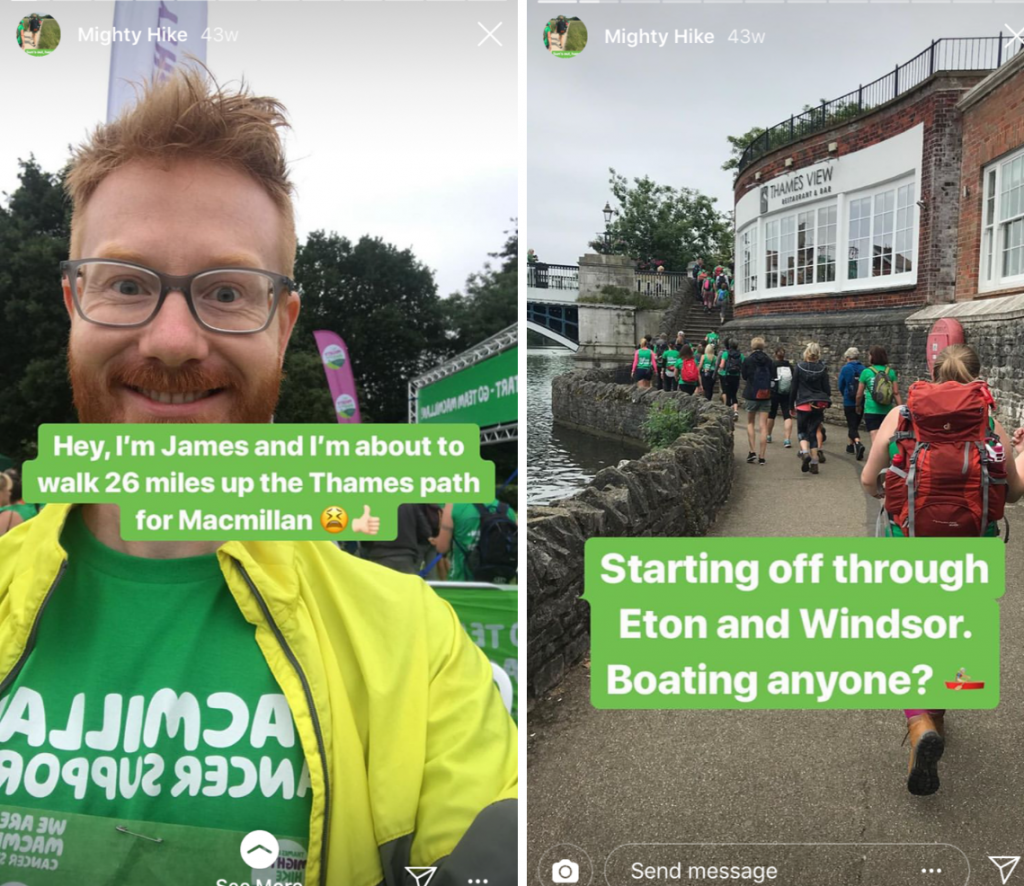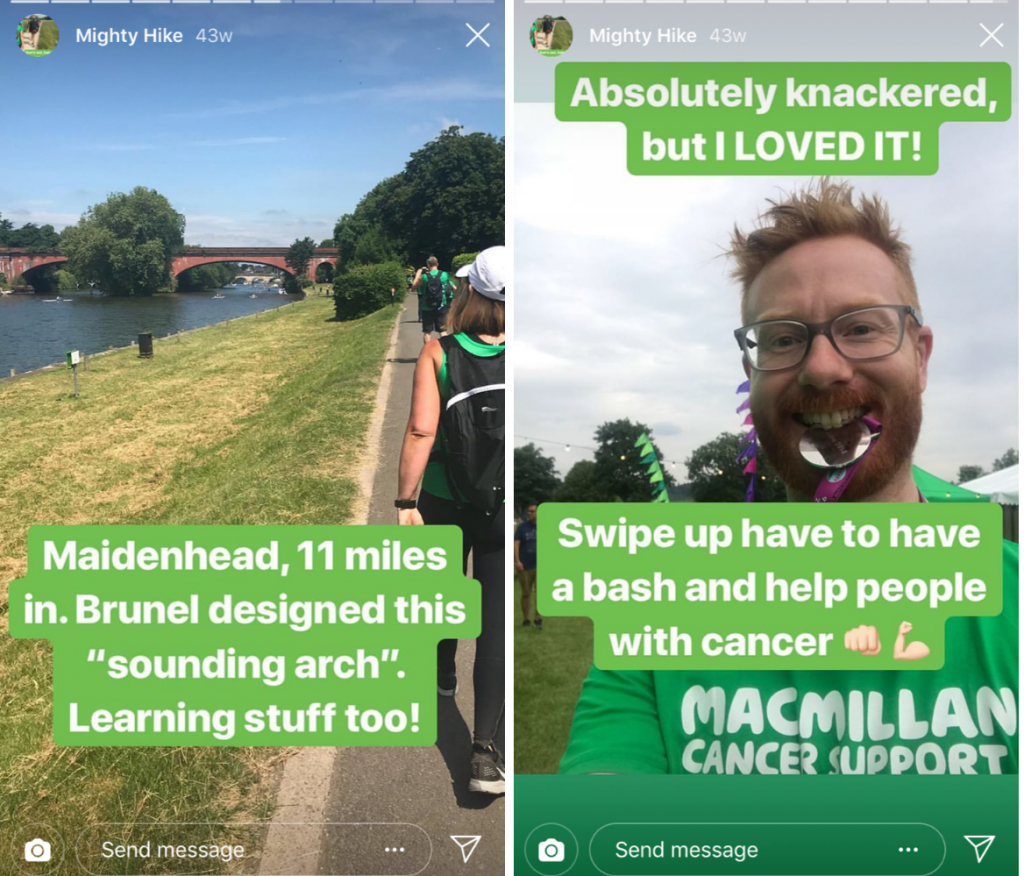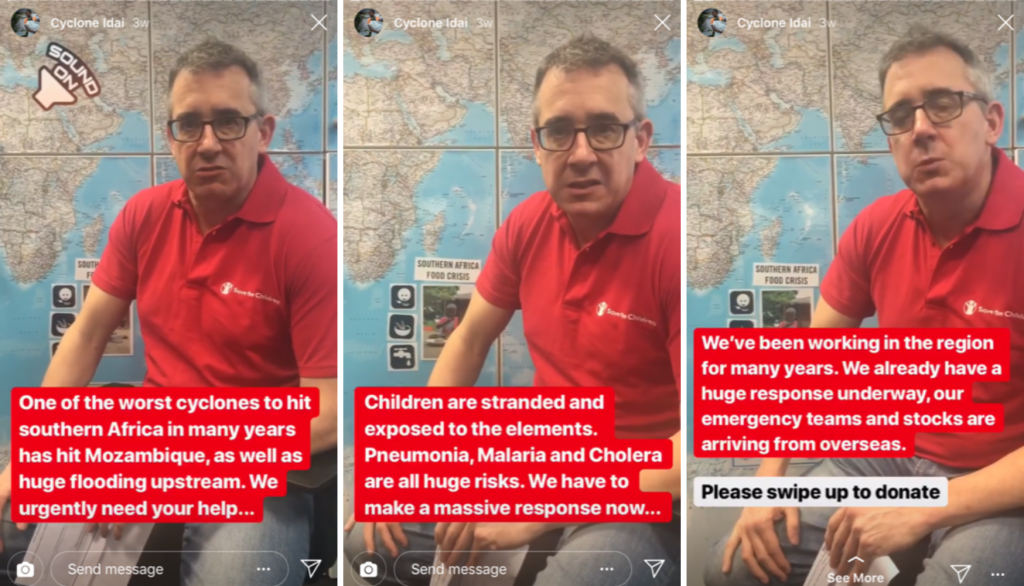10 ways charities are using Instagram stories

Instagram stories are hugely popular with 500 million daily active stories users in January alone. Our own Tereza Litsa, social media manager at Lightful, even predicted that charities will use them more to experiment with content in our January digital predictions post. They’re a great way to engage your audience on Instagram as well as to test out content, run polls, ask for feedback and much more. As your content only lasts for 24 hours, it allows charities to be more creative and even a bit more fun and informal. If you’ve struggled sometimes to think of what to post on Instagram stories, here are ten ways charities are using this feature.
Asking their audience
The question feature in Instagram stories can be used in lots of different ways. You could use it to ask for feedback on, say, a new logo design or you could use it to get people to share tips or advice that would be useful to your followers like NSPCC has done below. They asked their Instagram followers which games they like to play with their babies, then they featured some of the responses and then signposted people to a page on their website where they could get more brain-building tips for their baby.

We love this example from YouthLink Scotland who used the question feature to ask people to share their own stories of how youth work had changed their lives. Great idea to source potential case studies!

Running quizzes
Who doesn’t love a quiz? Instagram stories offers you the opportunity to run polls, but these can cleverly be turned into a quiz as RNIB did. The first story is a quiz question and the second gives the answer. It can also help you to understand how much your audience actually knows about a topic.


To say ‘thank you’
It’s always great to thank your supporters and fundraisers and social media lets you thank them personally too. The British Heart Foundation created an Instagram story to congratulate all those who completed their fundraising challenge, Dechox, in March and to say thank you for raising lots of money to beat heartbreak forever.

To sell stuff
Some charities sell merchandise on their website, on eBay or have items in stores where they get a percentage of the profits. Instagram is a great place to showcase them and, if you’ve got 10,000 followers or more, you can add a swipe up feature where you can direct people to purchase the item – in this example, M&S posted this in their stories and tagged Breast Cancer Now, which meant that they could add it to their own stories.

Shelter thanked radio presenters Julie Adenuga and Maya Jama for donating items to be sold in aid of Shelter and used the swipe up feature so their followers could shop the collection.

To show how your money helps
The British Red Cross used Instagram stories to share how farmers in Zimbabwe are tackling climate change thanks to learning new methods to grow food and adapt. This was all thanks to the generosity of the players of the People’s Postcode Lottery. Stories only last 24 hours unless you add them as a ‘highlight’ to your profile. If you need to thank supporters or funders, then save your stories as a highlight so that they can see them even after the 24 hours have passed.


Recruiting volunteers
More than half of all Instagrammers are aged under 34 so if you’re looking to recruit younger volunteers, Instagram could be a good place to start!

Tapping into Awareness Days
Just like you would tap into trending Awareness Days on Twitter (if they’re relevant, of course), you can do this on Instagram too. Concern Worldwide shared how they’re supporting women to break down barriers in their communities on International Women’s Day.

I love how Marie Curie shared stories of some of their hospices taking part in Pancake Day. They made use of gifs too and also video to show pancakes being flipped. This is a great way to show some personality. Most people probably think that hospices are sad places but Marie Curie is trying to change that perception.

Taking followers behind the scenes
Taking people ‘behind the scenes’ feels exclusive and makes people feel part of something exciting. Parkinson’s UK took their Instagram followers ‘behind the scenes’ of filming for a new campaign.

At events (and to encourage people to do one!)
If you’ve got an event on, live Instagram stories are a great way to involve people who can’t be there or to encourage people to sign up for the next one. I love how this story is told by James, a participant, and not Macmillan themselves. (Note, this story sequence has been shortened but you can see it in full in their Highlights).


Asking for donations
Social media is about raising awareness, building communities and creating meaningful engagement – and sometimes it can be used to raise money too. For International Development charities in particular, social media can raise huge amounts of money in emergencies and Instagram is no exception. When Cyclone Idai devastated parts of Zimbabwe, Malawi and Mozambique, charities like Save the Children launched into action. This story has been shortened but you can watch the entire story on their Instagram account in their highlights. Also note that the first few frames were video, which is a really good idea if you have a lot of information you need to get across, rather than using lots of image frames.

So what can we learn from these Instagram stories? Here are some top tips.
- Image or video always needs to be vertical
- Use video if you have a lot of information to relay
- Use the swipe up feature to take people to a landing page (only available if you have 10k followers)
- Use text to give context and make sure it’s large enough for people to read
- If appropriate, use the location as this can help you be discovered in that location’s story
- Use Canva to create templates if you want a professional look
Latest articles

In a world of growing uncertainty, small and local non-profit organisations often find themselves with competing priorities and struggle to plan how to allocate their available resources. Despite the increasing demand for their vital work, they are not always able to allocate the funds they receive to strategic planning and future growth.

As the world becomes more digitally-focused, it’s essential for nonprofits to have a digital presence. With more and more options for online engagement, we know that this can be challenging for nonprofits to tackle. But, we also know that it is a huge opportunity to increase audience engagement, awareness and fundraising. To help nonprofits navigate this, we’re going to explore the “whys” and “hows” of creating a nonprofit digital strategy. We’re even providing a free digital strategy canvas to help nonprofits improve their online presence in just a few steps.
See who we help
Contact us
Want to learn more?
Email Jonathan and start a conversation





